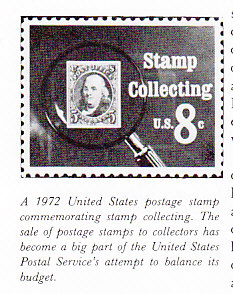In order to determine whether a stamp has been regummed, a knowledge of stamp printing is required. When stamps are printed, they are printed on a sheet of paper that is then gummed and perforated. The order in which this is done is the clue to detecting the type of gum: on genuinely gummed stamps, the perforations are applied after the stamp has been gummed. On regummed stamps, the gum is applied after the perforations have been made. If you take an ordinary fifteen-cent commemorative and break it from the sheet, you will notice the way the perforations slightly fray and how the gum does to extend around the perforation tips. On regummed stamps, the gum tends to glob on the perforation tips, extending slightly beyond them and making the perforation tips brittle to the touch.
This is the major test. But now, we are told,












